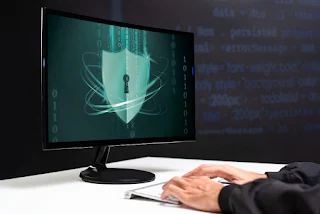Your personal data might be out there without you even knowing. In recent years, the dark web has become a marketplace for stolen identities, leaked credentials, and other sensitive information. If you’ve ever signed up for a service that suffered a data breach, your details could already be available for sale.
That’s where dark web monitoring comes in. It acts as a form of cyber surveillance, alerting you when your data appears in places it shouldn’t.
What Is the Dark Web?
The dark web is a hidden part of the internet that isn’t indexed by search engines. It requires special tools to access and is often used for anonymous communication. While it has legitimate uses, it’s also where criminals trade stolen data, from credit card numbers to login credentials.
Why Monitoring the Dark Web Matters
Most people don’t realize their accounts have been compromised until it’s too late. By then, attackers may have used your information for identity theft, financial fraud, or unauthorized logins.
Dark web monitoring helps detect these leaks early by scanning criminal forums, black markets, and leak sites for signs of your personal data. This includes:
-
Email addresses
-
Passwords
-
Social Security numbers
-
Bank account info
-
Medical records
If your data is found, you’ll receive an alert so you can take immediate action.
Credential Leaks Are More Common Than You Think
Every time there’s a data breach, usernames and credentials are often dumped online or sold. Attackers then use them in “credential stuffing” attacks, trying the same login details on other platforms in hopes of gaining access.
If you reuse passwords across accounts, one breach could give hackers access to your entire online identity. That’s why account monitoring is essential for both individuals and businesses.
How Threat Intelligence Supports Dark Web Monitoring
Dark web monitoring isn’t just about finding stolen data. It’s a piece of a larger puzzle called threat intelligence. This involves gathering information on cyber threats to help you stay ahead of attackers.
By combining dark web findings with broader threat insights, security teams can identify trends, uncover potential attacks, and take action before damage occurs.
Signs Your Data Might Be on the Dark Web
You might not notice right away, but these signs could mean your data is already compromised:
-
You receive password reset emails you didn’t request
-
Accounts are locked or accessed without your permission
-
You see charges or activity you didn’t authorize
-
Friends report receiving spam or phishing messages from you
If you’ve experienced any of these, it’s time to run a security check and consider using a dark web monitoring service.
Steps to Take If Your Data Is Found
-
Change your passwords immediately, especially if you’ve reused them.
-
Enable two-factor authentication on all major accounts.
-
Monitor your financial accounts for unusual activity.
-
Alert your bank or credit card company if sensitive data was exposed.
-
Report identity theft to the appropriate authorities if necessary.
Final Thoughts
The dark web isn’t going away, and credential leaks are part of the reality we face today. But you don’t have to stay in the dark. With proactive dark web monitoring, you can detect and respond to threats before they spiral out of control.
Your online identity is valuable. Don’t wait until it’s sold to the highest bidder. Start monitoring now and take control of your digital security.




